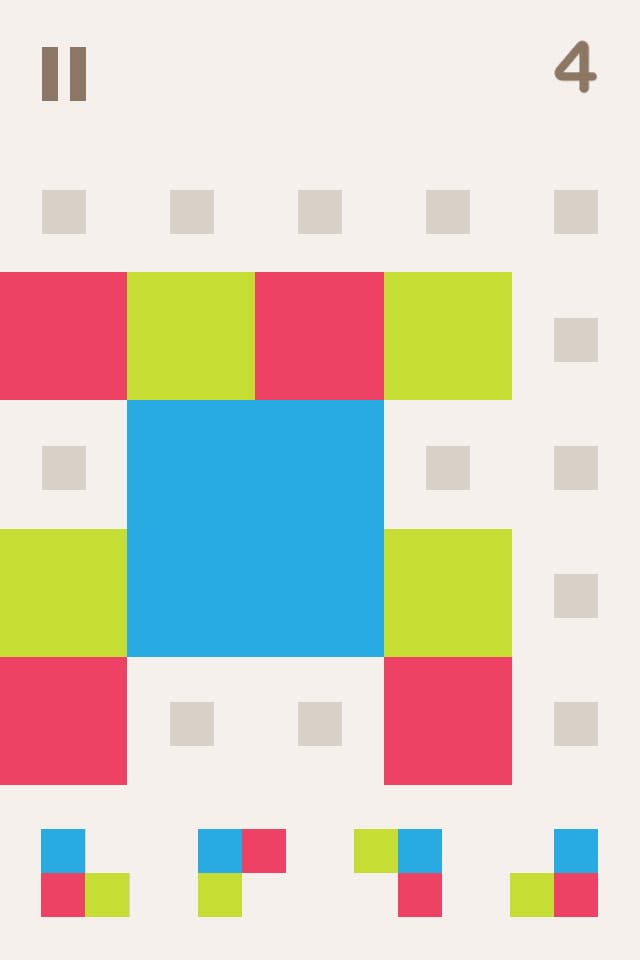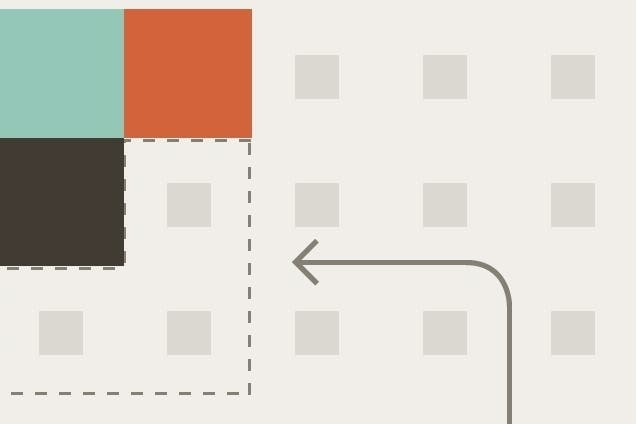Stickets review
The colour and the shape.
I can tell you about the rules that drive Stickets, but you should be the one left to uncover the strategies those rules allow for. Easy to learn, hard to master is the puzzle game mantra, and Stickets is both. It's wonderful, too.
And at heart, of course, it's deviously simple. You're faced with a 5x6 grid and handed a collection of pieces to place on it. Each piece is made of three differently coloured squares. You're given a series of randomised corners, essentially, laid out in four different orientations.
You earn points by placing these pieces on the grid - one point for every piece you manage to lay down. When you run out of space, you have to free up parts of the grid again by cancelling out any areas where three or more squares of the same colour touch. When you're out of options, it's game over.

Cripes, it's astonishing stuff: thoughtful, dynamic, and oddly tense. It's thoughtful because the three colours, the four orientations, the layout randomisation and the strange possibilities that these elements allow for are constantly fizzing around in your mind. It's dynamic because the battlefield is forever shifting as you lay pieces down and cancel other pieces out. It's tense because the whole thing is so gloriously elegant and minimalist that you really want to be good at it. Oh, and it's pretty, as well - each failure leaving you with a striking modern art canvas that speaks of your recent struggle.
It's one of those games where I'm constantly wondering about the secret maths behind everything. Is there a point where the playfield is too full - or too fragmented - that you'll never be able to pull it back? Is there an ideal blend of colours for the board at any one time? Even after a couple of days with Stickets, I'm still struggling to get a handle on how I should be approaching things. I'm still experimenting, still meddling, still searching for unspoken rules that will help me improve my score. At the moment I've decided that, when starting out, I should be placing new blocks in the centre of the screen rather than stringing them along the edges: there's more room to access all of the colours that way. This is a hard-won tactic that I'm sure I'll learn to reject a few days, weeks, or months from now, though. I'm starting to see the problems with it as I write, in fact.
There are plenty of difficult games on iOS already, of course, and plenty of them are refined and ingenious and driven by a quiet economy. What makes Stickets stand out, I think, is the way it makes you feel when you're playing it. When you're on a roll, you get a sense that you're watching an idea develop - an idea that grows with each square you lay down and evolves as you open up new gaps or close off old avenues. You're in control, but you always feel like you're struggling to contain something at the same time. It's a single-player puzzler where each game feels like a collaboration.
Alongside Space, the main event, Stickets also offers a puzzle mode where you tackle a series of bespoke challenges, and Time, a variant on Space that speeds things up by turning your blocks into ticking bombs. When they eventually explode, they take one of your lives away, and you can only get new lives by cancelling out really big chunks of the board in one go.
It almost feels like an entirely new game - as a puzzler's secondary mode always should. Really, though, the small team at Wanderlands is offering more than enough to keep you busy with just one way to play, let alone three.
You know those games that are both stylish and exciting, and which manage to stay on your homescreen while so many others come and go until you eventually think, what the hell? and chuck them into a special folder called Classics alongside Drop7, Fieldrunners, Canabalt, Ridiculous Fishing and Solipskier? Stickets is one of those games. It's already in the folder, in fact, and it's not coming out.

